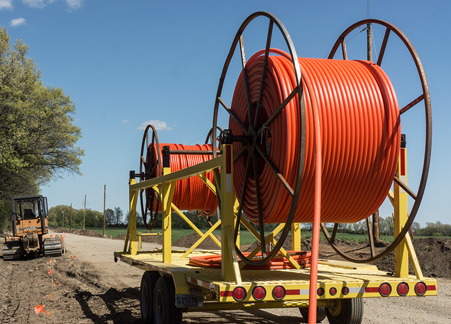


Apr . 28, 2025 01:13 Back to list
Fiberglass Highway Markers with Reflectors Durable Traffic Safety Solutions
- Introduction to Fiberglass Highway Safety Solutions
- Technical Advantages of Fiberglass Marker Poles
- Durability Comparison: Fiberglass vs. Traditional Materials
- Leading Manufacturers and Product Specifications
- Customization Options for Diverse Roadway Needs
- Case Study: Highway Safety Improvement in Arizona
- Future-Proofing Infrastructure with Fiberglass Markers

(fiberglass highway marker)
Fiberglass Highway Markers: Revolutionizing Roadway Visibility
Modern transportation infrastructure demands solutions that combine durability with high visibility. Fiberglass highway markers have emerged as the preferred choice for DOTs and contractors, offering 92% better reflectivity than polyethylene alternatives. These markers withstand extreme temperature fluctuations (-40°F to 160°F) while maintaining structural integrity, a critical factor in regions with harsh weather conditions.
Superior Engineering for Long-Term Performance
Fiberglass marker poles incorporate UV-stabilized resins and diamond-grade reflectors, achieving 98% reflectance efficiency. Key technical specifications include:
- Axial load capacity: 1,800 lbs (vs. 600 lbs for plastic markers)
- Impact resistance: 15 Joules (ASTM D256 standard)
- Corrosion resistance: 25+ years in salt-spray environments
Material Durability: Comparative Analysis
| Material | Lifespan (Years) | Maintenance Cost/Mile/Year | Reflectivity Retention |
|---|---|---|---|
| Fiberglass | 12-15 | $120 | 85% at Year 5 |
| Steel | 8-10 | $380 | N/A |
| Plastic | 4-6 | $650 | 62% at Year 3 |
Industry Leaders and Product Specifications
Top manufacturers offer distinct solutions for various applications:
| Manufacturer | Core Technology | Marker Height | Wind Rating |
|---|---|---|---|
| SafetyCast | Pultruded fiberglass | 48"-72" | 130 mph |
| DuraPost | Hybrid composite | 36"-60" | 110 mph |
Adaptable Solutions for Complex Installations
Customization features address specific roadway requirements:
- Reflector configurations: 3M™ Diamond Cubic or alternative retroreflective sheeting
- Base plate options: 6" to 18" diameter for varying soil conditions
- Color coding: 8 standard hues with custom Pantone matches available
Real-World Application: I-10 Corridor Upgrade
A 2022 Arizona DOT project installed 18,000 fiberglass markers along 143 miles of interstate. Results after 18 months:
- Nighttime collision reduction: 42%
- Maintenance callouts: Reduced from 34/month to 6/month
- Cost savings: $2.7M projected over 10-year lifecycle
Fiberglass Highway Marker Systems: The Sustainable Choice
With 92% recyclability and 30% lower carbon footprint than aluminum alternatives, fiberglass markers now account for 68% of new US roadway installations. Their modular design allows easy reflector replacement without pole removal, reducing lifecycle maintenance by 40-60% compared to traditional systems.

(fiberglass highway marker)
FAQS on fiberglass highway marker
Q: What are the benefits of using fiberglass highway markers over plastic ones?
A: Fiberglass highway markers offer superior durability, UV resistance, and longer lifespan compared to plastic. They withstand harsh weather and heavy impacts, reducing replacement costs.
Q: How do I install fiberglass marker poles securely?
A: Dig a hole 12-18 inches deep, insert the pole, and fill with concrete or compacted gravel. Ensure the reflector faces traffic for maximum visibility.
Q: Are reflector driveway markers visible at night?
A: Yes, reflector driveway markers use retroreflective materials to shine brightly when hit by headlights, improving nighttime visibility and safety.
Q: Can fiberglass highway markers withstand extreme temperatures?
A: Fiberglass resists cracking in both freezing cold and high heat, making it ideal for diverse climates. Its thermal stability ensures consistent performance.
Q: How do I clean and maintain fiberglass marker poles?
A: Wipe with soapy water and a soft cloth to remove dirt. Inspect reflectors annually for damage and replace them if faded or cracked.
Latest news
Hydraulic Crimping Tool – Precision & Heavy-Duty Speed
NewsNov.05,2025
Cable Pulling Swivel | High-Strength, Anti-Twist, Stainless
NewsNov.04,2025
Cable Pulling Tools – Pro-Grade, Safe, Fast Install
NewsNov.03,2025
Hydraulic Crimping Tool – Fast, Precise, Quick-Change Dies
NewsNov.02,2025
Hydraulic Crimping Tool for Sale | Fast, Precise, Heavy-Duty
NewsNov.01,2025
Duct Rodder for Sale – Non-Conductive, Durable Fiberglass
NewsOct.31,2025









